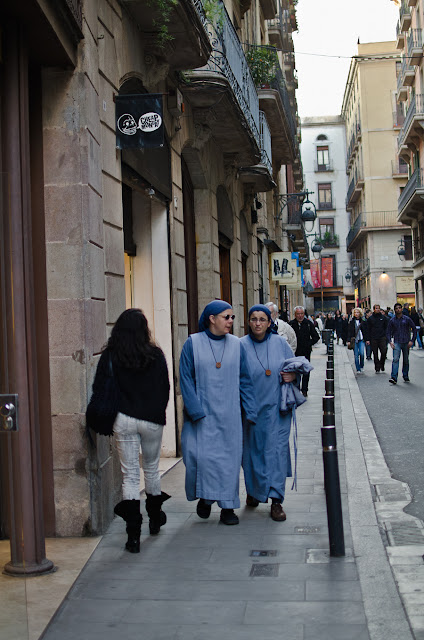 |
| Tourists in Sant Felip Neri square at Gothic quarter, Barcelona |
However, mass tourism has its downsides. One of the biggest
problems is that it can be overwhelming. The streets of Barcelona can be packed
with people, making it difficult to move around or even find a place to sit
down. This can be especially frustrating for those who are looking for a more
peaceful and relaxing experience.
If you're looking for a way to escape the hustle and bustle of mass tourism, the Gothic Quarter is the perfect place for you. This historic
district is located in the heart of Barcelona, and it's home to narrow streets,
winding alleyways, and charming squares. It's the perfect place to wander
aimlessly and get lost in the beauty of the city. Or was it?
Of course, the Gothic Quarter is not immune to mass tourism.
However, it's much less crowded than other parts of Barcelona, and it's easy to
find quiet spots to relax and enjoy the atmosphere. If you're looking for a
more authentic Barcelona experience, the Gothic Quarter is the place to be.
Unless you come across scenes like the one above which can happen every now and
then when cruise ships unleash heavy loads of adventurous ‘predators’ on a
hunting spree around the already strained city.
Nonetheless, let us look on the bright side of life! Here
are some tips for enjoying the Gothic Quarter without the crowds:
- Visit
during the off-season. The Gothic Quarter is most crowded during the
summer months, so if you can, try to visit during the spring or fall.
- Get
up early. The Gothic Quarter is much quieter in the morning before the
crowds arrive.
- Explore
the side streets. The main streets of the Gothic Quarter are always
crowded, but if you venture off the beaten path, you'll find much quieter
areas.
- Visit
during the week. The Gothic Quarter is busier on weekends, so if you can,
try to visit during the week.
- Take
a break from the crowds. If you're feeling overwhelmed by the crowds, take
a break from the Gothic Quarter and explore other parts of Barcelona.
The Gothic Quarter is a beautiful and historic district
that's well worth a visit. By following these tips, you can enjoy the Gothic
Quarter without the crowds and experience the best of Barcelona.
However, no one said that escaping the stark reality by
sticking one’s head in Barri Gotic like an ostrich in the sand is the final solution
to our problems with tourism. Pretending not to see that Barcelona is losing
its balance by suggesting visitors to spot an empty oasis is to do a favor to
the apathy and incompetence of our local authorities.
If we want to enjoy the beauty of Barcelona streets doing justice to the peaceful atmosphere that its inhabitants had in mind when they built it then we should see that there are strict rules and laws to punish the bad actors so we can be good hosts to our visitors as we always have been.
 |
| The entrance to Sant Felip Neri square, Gothic quarter, Barcelona |


